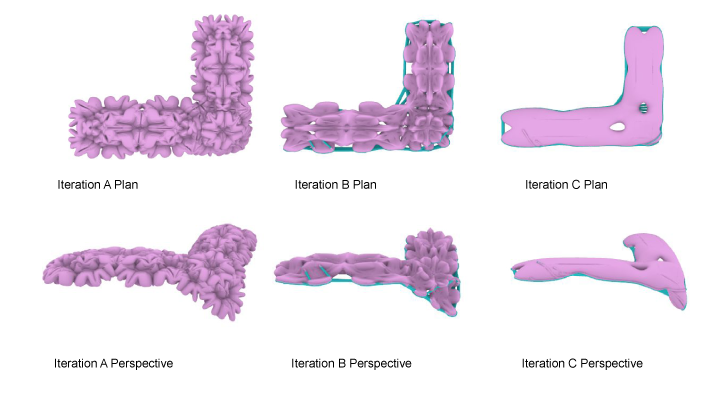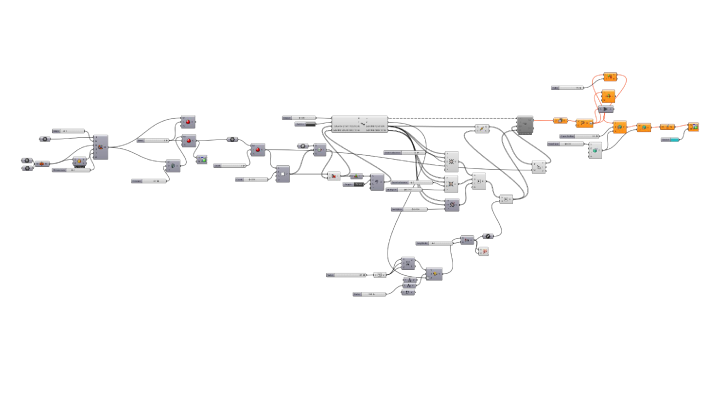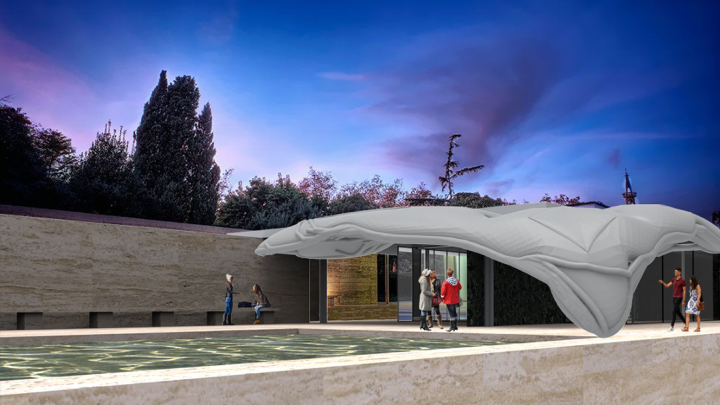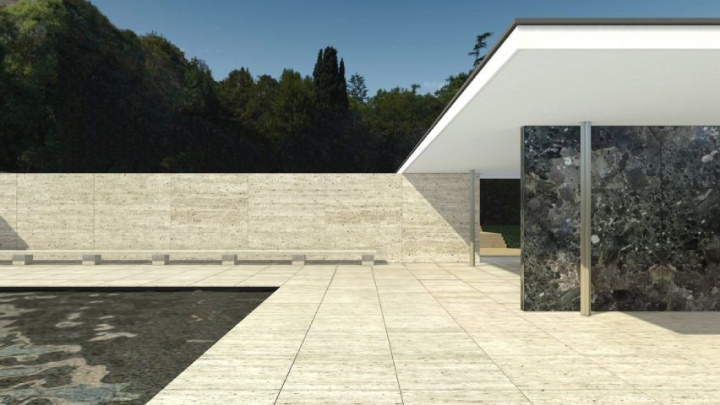
Barcelona Pavilion
Introduction
Recursive generative form finding is thought of as a selective process that utilizes the vast integration of points, lines, volume, surfaces and meshes. The Mies van de Rohe Barcelona Pavilion began its construction in 1928, clearly before these modeling tools could be imagined. The recursive design embedded into the Barcelona Pavilion is the starting point of an imagined conclusion, examined by intervening selected lines of extension. These imaginary connections provide a platform to question and speculate, existing answers related to scale and in accordance with logic resolved through architectural design. A portion of the foundation and roof serve as the ambition, thus allowing to harness existing barriers that intercept the monolithic qualities of the composition.
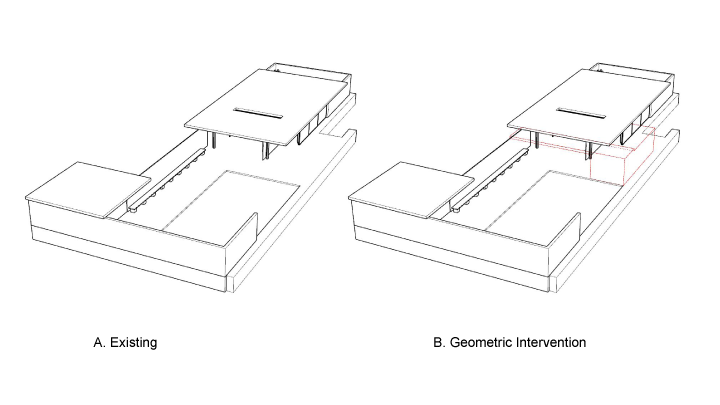
Design Intervention
The limits of the Barcelona Pavilion are not particular to the methods of construction, but rather its success at conveying the use of materials. Extracting these ideas for its quality of granularity, spatial conformity and untapped volume, are what make this proposed intervention a start for the robust use of iterative design.
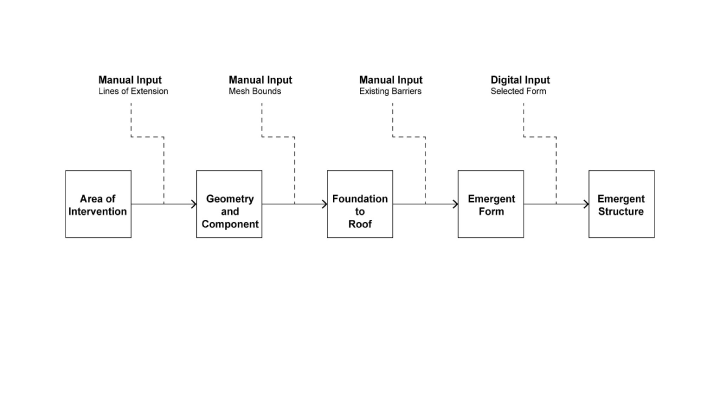
The approach driving this proposal is found through evaluating key moments utilized through the use of monolithic materials. Further, a component and geometry must find relief in the form finding exercise . Therefore, the component is restrained to proportions of the geometry, in order to limit the controlled aggregation for emergence.
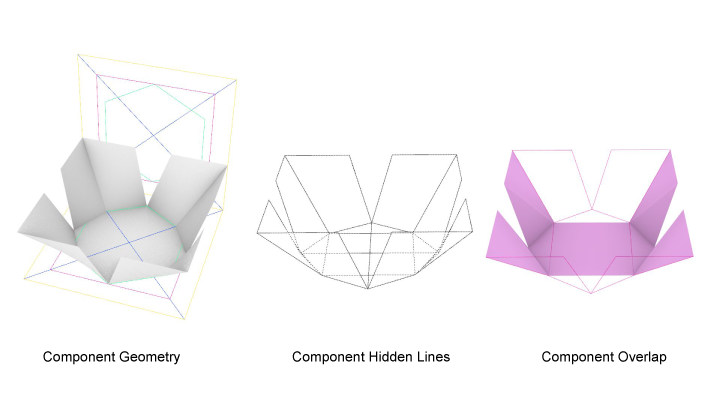
Geometric boundaries are critical to the placement of the design selection. The boundaries that make contact with the foundation and roof are new interpretations, which attempts to transfer the monolithic abruptness found in the open space of the entry way of the Barcelona Pavilion. The form finding iterations are examples of density and relief. The results of a new surface volumes allows to extract not only from the minimal approach taken by Mies van de Rohe, but to balance a visual area to the existing design that provides relief.
